Kostenlose Teilnahme am Innovation Showcase
Tuesday, November 12 - morning session
Moderator
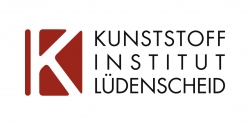 Jörg Günther
Jörg GüntherManaging director
KIMW Prüf- und Analyse
Germany
10:30
Premium interior surfaces balancing design, future mobility concepts and technology
 Alexander Schieke
Alexander SchiekeGlobal director of performance coatings
Stahl Chemicals Germany
Germany
Stahl's Stay Clean and Stay Silent technologies address modern design and mobility trends. Stay Clean offers a protective coating for leather, synthetic materials and alternative materials, ensuring easy maintenance of lighter, white interiors, which are becoming popular in contemporary design. Stay Silent provides anti-squeak coatings for automotive interiors, enhancing the comfort and tranquility essential in electric vehicles (EVs). These innovations support the shift toward lighter color schemes and the specific requirements of EVs, contributing to a cleaner, quieter and more sustainable future in vehicle design.
10:50
The beauty of lightweighting
 Emily Evans
Emily EvansCommercial director
Ash & Lacy
UK
Three commonly discussed topics are design trends, sustainability and lightweighting. They are all isolated challenges within themselves, where we as experts in metal processing are relied on to contextualize them into one deliverable concept. We will discuss how the implementation of digitally and optimally designed components reduces not only mass and embodied carbon but also tooling cost and lead times. We look to translate practices traditionally associated with low-volume builds, for mass-production competitiveness. We will also stress the importance of an OEM supplier communication shift from buyer to engineer to enable the uptake of these new structures, be it functional or a new aesthetic trend.
11:10
Unveiling the innovation potential of circular approaches in automotive electronics
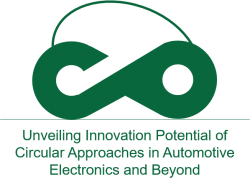 Nicolas Gouze
Nicolas GouzeProject coordinator
Project UNICORN
Germany
UNICORN is an EU-funded project to design, develop and validate innovative green and circular technologies for automotive electronics on four industrial use cases in automotive electronics (casing, dashboard, set and door, tire) as well as Mobility as a Service solutions.
11:30
Sustainability of surface decorated parts
 Katharina Prammer
Katharina PrammerSurface technology for molded parts
Kunststoff-Institut Lüdenscheid
Germany
How sustainable can coated materials be? Can they be sustainable at all? Recyclability is one of the major topics these days but is very complex when it comes to coated or decorated components. But what are the main drivers in calculating the carbon footprint of a component? Is recycling the only key factor? Do process chains and high durability maybe even compensate for the lower recyclability?
These are some of the leading questions that are currently investigated in various projects at the Kunststoff-Institut in Lüdenscheid. How to calculate the footprint combined with investigations on processes and influencing factors will lead to a holistic understanding of how to make coated components more sustainable without a negative influence on quality and design.
11:50
The McLaren W1’s interior design innovations
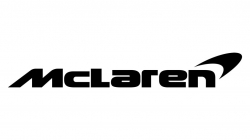 Steve Crijns
Steve CrijnsSenior design manager
McLaren Automotive Ltd
UK
The McLaren W1 is both a celebration of the excellence of the iconic McLaren F1 and McLaren P1 and the manifestation of McLaren’s World Championship mindset. The W1 offers a supreme track driving experience as well as unparalleled driving enjoyment on the road. It pushes the boundaries of real supercar performance with the most advanced aerodynamic platform of any McLaren road car and extensive use of advanced lightweight materials. This presentation focuses on its unique interior design challenges, offering an insight into the design and ergonomics solutions that help provide the purest driver connection, and the innovation in materials used inside the W1.
12:10
Gum rosin derivatives: sustainable raw material for automotive applications
 Fábio Loureiro
Fábio LoureiroResearcher
CeNTI
Portugal
The automotive sector is increasingly adopting eco-friendly solutions, including for injected parts in automotive interiors. As a major environmental contributor, the industry is striving to use greener, sustainable materials while maintaining quality. This aligns with the growing biopolymer market and the use of natural, bio-based and secondary raw materials. A Portuguese consortium has employed gum rosin resin derivatives as compatibilizers for polymer components due to their thermal stability and compatibility with extrusion and injection molding processes. These derivatives are versatile, multifunctional natural raw materials that enhance the performance and bio-content of synthetic and biodegradable polymeric matrices, yielding significant benefits.
12:30
Eco-friendly decorative film for automobile interiors
 Takeshi Kihara
Takeshi KiharaSales and marketing manager
DNP/Dai Nippon Printing
Japan
PP is used in large quantities in automobile parts and is suitable for recycling. Further growth is expected in the future. However, when PP is used as a base for decorative films, challenges have included weak ink adhesion and the difficulty of maintaining the balance between the high-quality design, physical properties and moldability. DNP has overcome these challenges by leveraging the printing technology and know-how it has cultivated over many years to establish a mass-production technology for PP-based automotive decorative films.
Tuesday, November 12 - afternoon session
Moderator
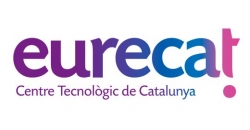 Dr Paul Lacharmoise
Dr Paul LacharmoiseFunctional printing & embedded devices director
Eurecat Technology Center of Catalonia
Spain
14:00
Evaluating thermoforming stretch of functional inserts for injection molding electronics
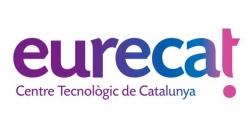 Eduard Almar
Eduard AlmarR&D researcher Polymeric and Composite Processes Unit
Eurecat Technology Center of Catalonia
Spain
This presentation explores the innovative application of photogrammetry in assessing the stretch behavior of functional inserts during the thermoforming process, a critical aspect in the production of injection molded electronics (IME). IME technology, which integrates electronic functionalities into 3D molded structures, has seen rapid advances, but challenges persist in ensuring the precise deformation of functional inserts during thermoforming. We introduce a novel methodology employing photogrammetry, a technique that uses photographs to measure distances and establish maps and models. Our approach allows for accurate, non-contact measurement of the stretch distribution of functional inserts, providing valuable insights for optimizing thermoforming parameters.
14:20
Designing the future of comfort: integrating heated surfaces in vehicle cabins for optimal energy efficiency
 Christian Kussmann
Christian KussmannBD/strategy/innovation
ATT Advanced Thermal Technologies
Austria
14:40
Carbon footprint and sustainability of plating on plastics
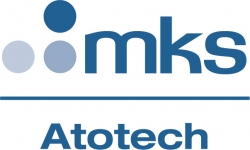 Bernd Frank
Bernd FrankGlobal OEM senior director GMF
Atotech Deutschland
Germany
As a leading surface finishing brand, we are committed to promoting sustainability, enhancing environmental performance and resource efficiency, and adopting ambitious frameworks. Our presentation covers two key aspects: sustainable plating for the automotive industry, Cr(VI)-free and non-PFAS, offering durability and quality; a carbon footprint study of electroplating, analyzing materials and energy use for optimization, including a comparison with alternative technologies.
15:00
New concepts for enhanced comfort in automotive interiors
 Miguel Peixoto
Miguel PeixotoResearcher
CeNTI
Portugal
The demand for new concepts that contribute to making the automotive cabin a 'third living space' has increased in recent years. In this way, new solutions to enhance comfort in the automotive interior will be presented: innovative approaches to thermal management within surfaces of automotive interiors, focusing on the combination of active heating systems, based on printed electronics and technical textiles, and innovative functional materials; and new concepts with suction function to hold objects on the center console during braking and dynamic acceleration of the vehicle, highlighting the advantages of additive manufacturing technologies in the automotive sector.
15:20
AI-supported damage analysis on decorated plastic components
 Jörg Günther
Jörg GüntherManaging director
KIMW Prüf- und Analyse
Germany
The damage analysis of coated and uncoated plastics is a complex task and requires a great deal of specialist knowledge of the individual processes as well as about methods for determination. The Kunststoff-Institut has many years of experience in both fields and has created an AI-supported solution in cooperation with the AI specialist d.velop AG to find solutions to problems more quickly and comprehensively.
15:40
Sustainable chrome plating: Cr3- and Cr6-free plastic plating milestones
 Pablo Javier Ramos Cuevas
Pablo Javier Ramos CuevasGlobal sales coordinator
Taiyo Manufacturing
Japan
In 2017, the REACH regulation limited the use of hexavalent chrome (Cr6) for chrome plating and defined a deadline for its use in 2030 in the European Union. Since then, many companies have tried alternative manufacturing methods for plastic components. Taiyo took the lead and, after developing a chrome plating method 100% free of hexavalent chrome in pre-treatment and electroplating – mass production of which began in 2022 – has been improving it and adding new features such as the possibility of PC/ABS chrome plating or chrome colors virtually identical to those that can be achieved with hexavalent chrome.
Wednesday, November 13 - morning session
Moderator
 Volker Dahinten
Volker DahintenCountry manager DACH
MacDermid Alpha Electronics Solutions
Germany
 Sebastian Bendig
Sebastian BendigInternational sales executive
MacDermid Alpha Electronics Solutions
Germany
10:30
Versatile, lightweight and silent electroactive polymer actuators for automotive interiors
 Dr Fabio Beco Albuquerque
Dr Fabio Beco AlbuquerqueBusiness development manager EAP
Dätwyler Schweiz
Switzerland
Dätwyler is undertaking the industrialization phase of a novel transducer technology completely made out of polymers ('electroactive polymers' or EAPs), with a first industrial-scale pilot production line due to be operational by Q4 2024. Dätwyler EAPs are versatile actuators that can be manufactured in various geometries and sizes, customized to customers' specific needs. EAPs are intrinsically silent, self-sensing, compact and lightweight, with low energy consumption and high strokes at low response times. They constitute a robust, low-mechanical-complexity alternative to conventional actuation technologies and can be straightforwardly integrated and assembled with reduced costs.
10:50
Textile-based composites for structural and decorative automotive applications
 Fernando Oliveira
Fernando OliveiraR&D engineer
Citeve
Portugal
Textile-based composite solutions are a growing trend in the automotive sector, not only for structural applications but also for interior decorative purposes. These solutions take advantage of a wide array of materials ranging from natural fibers to high-performance yarns such as carbon or basalt, and conductive yarns that provide the structure with smart functionalities. Advanced textile manufacturing techniques allow the combination of these materials into hybrid yarns and fabrics, or complex tailored structures integrating smart elements that can be processed into composite parts with improved aesthetics, high performance, integration of smart features and low environmental impact.
11:10
An alternative to 'piano black'? Matt-finish smart surfaces
 Peter Warwick
Peter WarwickDirector of innovation
MacDermid Alpha Electronics Solutions
UK
The evolution of automotive interiors into sophisticated and interactive work and leisure spaces is driving the development of smart surfaces – those that have both a decorative and a functional purpose. As never before, there is a desire for smart surfaces that are not only visually attractive and glare-free matt in appearance but also softer to touch, offer more accurate control and are anti-fingerprint. This presentation introduces a new range of matt hardcoated films that offer visually stunning design options for interior designers. It also discusses support for existing film insert molding (FIM) processes.
11:30
Setting new standards for automotive interiors with sustainability and high performance
 Nicolas Samson
Nicolas SamsonSenior sales manager automotive interiors
Bcomp
Switzerland
As the automotive industry undergoes a revolution to become cleaner, it is crucial to achieve a reduced environmental impact. Bcomp’s proprietary flax-based materials, ampliTex and powerRibs, applied to automotive interiors, can help decrease carbon footprint by cutting weight and reducing plastics use. These materials also offer recyclability and aesthetic design features, contributing to a more sustainable industry through circular opportunities and seamless integration into existing manufacturing process. Proven in use cases with brands such as Cupra, Volvo and Polestar, Bcomp’s technologies are challenging standard solutions with one based on nature.
11:50
Sustaining the momentum of automotive interior transformation while incorporating sustainable materials
 Dr Mathieu Jung
Dr Mathieu JungGlobal mobility industry manager - sustainability
Covestro
Germany
Over the past decade, automotive interiors have undergone significant transformations, marked notably by the integration of light, transparent materials and human-machine interface (HMI) functions. While consumers have welcomed these advancements, the next critical challenge lies ahead: the transition toward employing more sustainable materials. The rigorous demands and stringent standards of automotive applications raise concerns regarding the broader adoption of sustainable materials across various applications. Consequently, there is an increasing need to comprehend the performance levels, long-term supply safety and quality consistency of material options provided by suppliers throughout the value chain. Simultaneously, there is a noticeable shift in the color, material, and finish (CMF) design language toward expressing sustainability, propelled by the younger generation's heightened environmental consciousness. These changes must be evident, identifiable and effectively communicated through the vehicle's appearance to signify ecological awareness. At Covestro, we aim to outline potential strategies to address these consumer demands through the use of our material solutions. This should serve as a foundational step for further exploration and discussion.
12:10
Exploring innovative e-textile solutions for the future interior ambiance
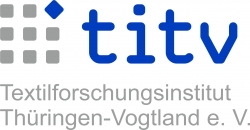 Isabelle Grimm
Isabelle GrimmProject manager
Textilforschungsinstitut Thüringen - Vogtland
Germany
On the road to automated and connected driving, the vehicle interior is facing a complete redesign. Global future trends have a significant influence on the ambience of future interiors, as they shape the development of interior design. Textiles play a decisive role in automotive interiors, as they fulfill a variety of functions and have a significant influence on the ambience, appearance and comfort. By integrating additional functions into the textile, innovative solutions are offered to meet the needs of the occupants. The presentation will show different textile-based developments in the interior world.
12:30
Simplifying complex interior applications using nonwovens
 Jure Porenta
Jure PorentaBusiness segment manager
Filc
Slovenia
The automotive industry currently makes use of a wide variety of composite materials and complex processes. Over the past few years, we have seen a trend of simplification, specifically within interior applications. At Freudenberg Performance Materials, we now offer innovative design solutions to keep pace with the current demands of the market.
Wednesday, November 13 - afternoon session
Innovative solutions from SpainModerator
 Lucinio Muñoz
Lucinio MuñozEconomic and commercial counsellor
Embassy of Spain
Germany
14:00
Ionic wind to refrigerate onboard electronics - cooling systems half the weight and consumption with ionic wind
 Héctor Puago
Héctor PuagoCo-founder & CTO
Cedrion
Spain
Smaller and more powerful electronic components imply higher power consumption and more thermal management issues. Current solutions - fans assisted heat sinks are heavy, noisy and produce vibrations. CEDRION’s patented technology of ionic wind creates devices that are half the weight, volume and power consumption than traditional technologies and do not have moving parts, so they are completely silent. We can help increase the range of the electric vehicles, by reducing weight and consumption and increasing the comfort in the cabin. We have prototypes and ongoing projects with automotive and aeronautic companies and products already in the market in electromedicine sector.
14:05
Sustainable fully-organic conductive inks for use in printed flexible electronics
 Egoitz Luis Monasterio
Egoitz Luis MonasterioAutomotive BDM
Cidetec Surface Engineering
Spain
At present, functional electronics utilize scarce metals and unsustainable materials for conductive circuits. CIDETEC is developing green conductive inks suitable for different applications (such as RFID tags, microsupercapacitors, etc), including fully-organic graphene-based inks and cellulose-based hydrogel inks. These inks will be suitable for printed electronics, enabling low-cost yet scalable fabrication of biocompatible “metal-free” electronic components on different types of substrates.
14:10
Thermal and acoustic innovations to maximise the comfort inside the cabin
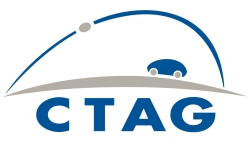 Vanessa Ventosinos Louzao
Vanessa Ventosinos LouzaoSenior researcher
CTAG – Automotive Technology Centro of Galicia
Spain
The presentation will explore different CTAG innovations for optimizing vehicle cabin thermal systems for enhanced energy efficiency and passenger comfort and a cutting-edge sound system innovation that not only provide greater design flexibility, but also can contribute to enhanced safety performance. These developments aim to create a more comfortable, efficient, and safer driving experience, setting new benchmarks for future vehicle design.
14:15
Fine line printing for automotive HMI solutions
 Javier Zuñiga
Javier ZuñigaElectrical and electronic engineer
Embega S.Coop
Spain
Until now, PEDOT-type organic inks have been used to manufacture flexible transparent printed electronics solutions for automotive HMIs, electrodes/buttons. However, these types of solutions suffer degradation when exposed to high temperatures during the vehicle lifetime. This degradation produces a loss of tactile sensitivity to the user and a shorter useful life for the product.
As a solution to this issue, Embega has developed high technology materials and processes for producing 50-micron lines silver ink-based patterns, for electrodes/buttons of the HMIs, to avoid these losses in sensitivity and offering a more robust and durable product on the market.
14:20
Plastronics - the revolution of smart plastics for automotive interiors
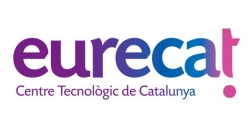 Enric Fontdecaba
Enric FontdecabaPolymeric and composite processes unit director
Eurecat Technology Center of Catalonia
Spain
The speech aims to highlight the quantum leaps that plastronics is experiencing as a result of its integration into low-cost, high-performance printed electronics inside plastic structural parts. In addition, new use cases will be presented to explore the challenge of thermoforming processes in greater depth. Such is the case of the Púlsar Project, developed in Eurecat's plastronics pilot plant, which comprises a smart plastic surface of only 3 mm thick featuring an intuitive HMI interface with seamless LED lighting and a capacitive sensor. All this is, monolithically embedded inside a single piece of plastic.
14:25
Sustainable composite materials with reduced carbon footprint for automotive industry
 Kristian Kujaw
Kristian KujawBusiness and operations manager
NAITEC
Spain
Reducing the carbon footprint is a global goal, with the EU aiming for a 55% reduction by 2030 compared to 1990 levels. Transport is responsible for 25-30% of the EU’s annual CO2 emissions, though this may be underestimated. This project aims to reduce the carbon footprint in the mobility sector through three complementary strategies. It focuses on reducing CO2 emissions in manufacturing processes by developing sustainable materials for vehicle parts made from bio-based composites reinforced with natural fibres.
14:30
Design meets function: our decorative surfaces
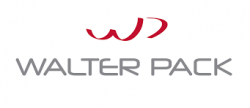 Joseba Garai
Joseba GaraiAutomotive KAM
Walter Pack
Spain
Our approach combines beauty and functionality, creating flexible solutions for many industries and design needs. Whether enhancing modern automotive interiors and exteriors or pioneering innovative product designs, our decorative pieces not only elevate the appearance of any project but also offer strength, practicality, and easy maintenance.
Made with advanced printing techniques on plastic foil, our products are both durable and stylish. We are specialists in "secret till lit" technology, seamlessly integrating hidden displays and backlit components. The surfaces include capacitive buttons for smooth, responsive interaction, making them a great choice for anyone wanting to enhance their product with new technology.
14:35 - 15:00
Panel Discussion
Join the speakers from this session for a group panel discussion.
Thursday, November 14 - morning session
Moderator
 Bert Suffis
Bert SuffisSales & innovation director
JSP
France
10:30
Designing EPP for reduced carbon footprint and closed-loop recycling
 Mathieu Guenet
Mathieu GuenetInnovation manager
JSP
France
Future total cost of ownership is expressed in carbon footprint. JSP, a global raw material supplier, is leading the design of EPP systems for closed-loop recycling to meet the Green Deal. Using certified closed-loop raw materials is key. EPP solutions using structural inserts and fixation points are a challenge for closed-loop recycling upon vehicle dismantling. Case studies will show practical solutions that can be implemented in the design and manufacturing process of high-precision interior components to minimize the carbon footprint during the full lifecycle. Savings in terms of weight, production cost and ultimately carbon footprint will be highlighted.
10:50
IMSE for automotive interiors: from technology ideation to serial readiness
 Dr Thomas Vetter
Dr Thomas VetterSVP global automotive
TactoTek
Germany
An exciting journey that starts with OEM design innovation, followed by application evaluations and selection, continues through OEM technology validation and RFQ preparation. Along the way, further benchmarking studies are conducted to confirm the technology's competitiveness, while an ecosystem is built to ultimately bring the technology to market.
11:10
New features for the automotive industry: printed and textile solutions
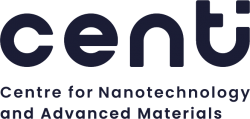 Duarte Dias
Duarte DiasResearcher
CeNTI - Centre for Nanotechnology and Advanced Materials
Portugal
The automotive industry continually seeks innovative functionalities to enhance user experience, focusing on comfort and security. Structural components play a crucial role, and implementing a sophisticated sensorization system can alert drivers to damage, optimizing the replacement and/or arrangement of parts. Additionally, thermal regulation systems can significantly improve driving comfort by offering a customized experience. To achieve these goals, we are exploring technologies such as printed electronics techniques and the integration of conductive yarns into the car's fabrics. These solutions hold great potential for enhancing sensorization and thermal regulation in automotive applications, contributing to a safer and more comfortable driving experience.
11:30
T2T closed-loop recycling
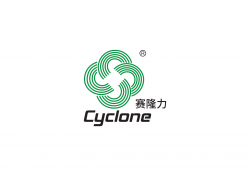 Marc Zhao
Marc ZhaoMarketing manager
Fujian Cyclone Technology
China
Products with recycled fabrics are the trend nowadays. More and more brands are using recycled fabrics in their new collections. We are one of the biggest producers of recycled polyester yarn, which is made from waste textile. It is closed-loop recycling: once the textile products cannot be used anymore, we can recycle them. There is always some polyester textile used in the car. For this, Cyclone yarn can be the best choice.
11:50
Bypell: a clean hydro-entanglement technology, sustainable material
 Rossano Romagnoli
Rossano RomagnoliCEO
Eredi Mezzabotta Maria
Italy
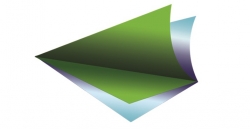 Furlong Zhang
Furlong ZhangMarket operations
EMM - Junhua Technology
China
The presentation will explain how the recycled leather is made, from the scraps to the final finishing. We will speak about composition – all the materials and substances contained in the recycled leather and why they are used and put together to get the final product; performance – physical properties of the recycled leather; quality – technology and production sites introduction and quality control overview; LCA – environmental impact estimation certificate; future project – preparing to build up a smart technology plant in East Asia to rescue worldwide leather waste.
